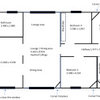Structural Insulated Panels, triple glazed windows
4 years ago
Featured Answer
Sort by:Oldest
Comments (7)
- 4 years ago
Related Discussions
Concrete Tilt Panel as a Radiator Wall
Comments (4)Hi LesleyH. We will be using Breezeway Altair Louvres which have been successfully tested up to 415kph winds. If you go to the Breezeway website you'll find many testimonials from homeowners highly rating these louvres after going through Category 5 Cyclone Yasi with 215kph winds....See MoreMagnesium Oxide MgO or MgSO4 Structural Insulated Panels
Comments (2)I have not had any experience with these panels, but as with any new or unusual building products you need to approach with caution. I did not know that they were available in Australia? The first question I would be asking after the Grenfell Tower tragedy is what assurances the manufacturer can offer that the Magnesium Oxide component is not flammable? Australian traditional brick veneer construction allows you to hide lots of things like electrical wiring and plumbing in the walls. If you start chasing these services into a structural panel what happens to the structure, the insulation, and how do you finish it off? How do these panels work with openings such as windows and doors? Do they take standard windows and doors, or do they have to be custom manufactured for these panels? As with many new building products that seem great in principle it is the real world practicalities that are just as important. Don't look at their beautifully rendered marketing images, go and see a finished house inside to see how neat the electrical, plumbing and window openings look before you commit. If these panels are so good why aren't they commonly used in new housing? Are you prepared to pay good money to be a guinea pig? Best of luck, Dr Retro of Dr Retro House Calls...See MoreFailed Basix due to large windows
Comments (18)I'm not expert, & no very little about the rating systems. But have heard they're pretty opaque, & as mentioned may not really mirror real world outcomes. I'm surprised that overglazing the northside will result in too much heat loss. If anything, with the right sized eaves, I'd expect it means too much heat gain in winter (& shaded in summer) in the day. But as mentioned by Paul, it's important that you have thermal mass within the home, to absorb this heat. Which can then be released over time as the home is cooling down in the evenings. Thermal mass are heavy materials, like masonry, concrete, & even water. By absorbing heat, & releasing it slowly, thermal mass knocks off the peaks of daytime highs, & nighttime lows, keeping the internal temperature more stable. Without it a lightweight home can become too hot in the day (even in winter on occasions) & too cold at night. Thermal mass is especially important inland, where the difference between daytime highs & nighttime lows (called the diurnal temperature) is greater. So if you are away from the coast of definitely investigate whether you have enough thermal mass in your home. A north facing concrete of tiled floor will do it. It will greatly increase the comfort & energy efficiency of your home. Instead of aiming for the bare minimum when it comes to energy efficiency, resulting in less comfort, & much higher bills. More about thermal mass can be found on this wonderful government website, http://yourhome.gov.au/passive-design/thermal-mass...See MoreInvesting in Double Glazed windows. Options for other heating &cooling
Comments (4)I'm with your hubby I'm afraid. Double glazing is mostly a way to deal with cold radiating into a house, and heat leaking out of the house via conduction which is not the problem in Perth. Sure it will prevent heat from radiating into the house via the windows but mostly that's not how houses heat up in Australia. What causes a house to heat up is sunlight warming up the ambient air inside the house via a greenhouse effect which double glazing will not prevent, or hot air being born into the house on the wind. So double glazing will only prevent this if you intend to shut the house up all day. In which cause it's just the lack of air movement not the insulative properties of double glazing doing that. Single glazing would also do that. In Australia what matters most is cross ventilation in order to create a restful environment. Evaporative cooling works effectively when you have good cross ventilation as it's the evaporation of the water vapour causing the cooling effect. Additionally you do not want to shut up a house with evaporative cooling as you'll get condensation and mould inside the house. So if you are 100% on double glazing it will only be effective with refrigerated air conditioning as it's relying on preventing air exchange between the inside and outside of the house to work and preventing conduction of ambient air temps. Double glazing is not popular here for a reason, it's the wrong solution for our climate. Cross ventilation and proper solar management is the correct solution for our climate. So I'm with your hubby I think it's wasted money that would be better spent on controlling the direct sunlight to the home and proper ventilation....See More- 4 years ago
- 4 years ago
- 4 years ago
- 4 years ago




ddarroch